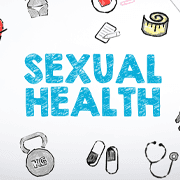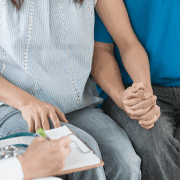Chlamydia in Throat: Symptoms, Diagnosis and Treatment
In This Article
Chlamydia in Throat: Symptoms, Diagnosis and Treatment
Parvathy
Updated on March 01, 2024
Medically verified by Dr. Pournami
Fact checked by Dr. Arya

Wellness
10 mints
Care to know what it is? Throat chlamydia is a neglected aspect of sexual health education. Knowing about this condition is a crucial part of dealing with it.
Karepedia here to discuss symptoms, diagnosis, and treatment options of throat chlamydia.
This will empower you to make informed decisions regarding your health. Now let's get started!
Throat Chlamydia
Throat infections are common among many but most people may not be aware about Chlamydia. Chlamydia is a sexually transmitted infection that is caused by Chlamydia Trachomatis bacteria.
- In most cases, it does not produce any symptoms.
- As per research, it is found out that only 10% of males and 5-30% of females who have Chlamydia develop symptoms. The symptoms usually appear after 7-21 days of exposure.
- A test can usually show if the person has Chlamydia 1-2 weeks after exposure. A doctor refers to a chlamydia infection in the throat as pharyngeal chlamydia.
How Common is Chlamydia?
Chlamydia is the most frequently reported bacterial sexually transmitted infection in the United States. And the story in India is not too different.
The major symptoms of people who do have Chlamydia in Throat develop the following symptoms:
- Sore throat
- Redness in the mouth or throat
- Swollen tonsils
- Swollen lymph nodes in the neck
- Possible fever
- White spots in the back area of the throat
- Sores around the mouth or in the lips
- Pain in the mouth or throat and at times even both
It is not possible to pass Chlamydia through:
- Contact with a toilet seat
- Sharing a sauna
- Using a swimming pool
- Touching a surface that a person with chlamydia has touched
- Standing close to a person who has the infection
- Coughs or sneezes
- Sharing an office or house with a colleague who has the infection
Risk Factors
Want to know what the risk factors of Chlamydia are? Here you go:
- Less condom use.
- Less use of health services to prevent and treat STIs.
- Multiple sex partners.
- Giving oral sex to a person with an infected penis.
- Giving oral sex to a person with an infected vagina.
- According to the National Institutes of Health (NIH), a mother who has chlamydia infection can pass it on to her baby during childbirth.
Methods and Prevention
There are different preventive measures which reduce the chances of Chlamydia.
These include:
- Using condoms - Use condoms during each sexual contact .
- Using condoms properly reduces the risk of infection.
- Limit the number of sex partners - Having multiple sex partners increases the risk of contracting Chlamydia as well as other such STIs.
- Get regular check-ups - If you are sexually active and have more than one sexual partner, it is best to consult a doctor and do the screenings to find out if there is any possible infection.
 10mint
10mintSexual Health Matters: How To Maintain Your Sexual Health ?
 10mint
10mintYour Guide to Sexual Health Screening and Preventive Measures
 10 mints
10 mintsSTDs in Women: Comprehensive Guide on Symptoms and Treatments
Get a Callback Now
Diagnosis
For diagnosing Chlamydia of the throat , a doctor uses a cotton swab to obtain a fluid sample which will be sent to an external lab for bacterial testing.
If you’ve had a sore throat that doesn’t seem to go away or have a partner that you’ve had oral sex with who tested positive for chlamydia, you might want to ask your doctor about oral Chlamydia testing.
A person can get Chlamydia testing in the following ways -
- Doctor's office
- Community health clinic
- Local health department
- Local planned parenthood centre
If people have a high risk of Chlamydia, they need screening for all types of Chlamydia once every 3-6 months .
Chlamydia Screening
Health authorities recommend screening for people who are:
- Females under 25 years of age who are sexually active
- Pregnant women who are under 25 years of age or older if at high risk
- People with HIV who are sexually active, at least once a year
Treatment for Chlamydia
- Chlamydia is treated with antibiotics. The most common antibiotics such as Azithromycin or Doxycycline are used for the treatment of Chlamydia in the throat.
- These antibiotics work by slowing or stopping the bacterial growth which cures the infection.
- Even if the symptoms reduce or go away, make sure you finish the entire course of medication as stopping the medication early would cause the infection to come back.
- It is also to be noted that once the infection is cured, there are chances that the person may get Chlamydia again as the medication will only cure the current infection.
- The recurrence rate of Chlamydia is very high so it is very important to take preventive measures.
- When left untreated, Chlamydia can increase the risk for various other health problems such as HIV /AIDS and infertility.
- It weakens one's immune system making a person more vulnerable to other infections and diseases such as other STIs.
- Females who have untreated Chlamydia may suffer from pelvic inflammatory disease, ectopic pregnancy and infertility.
- In males , it can lead to infertility and infection of the epididymis. As per the report of the NIH, untreated Chlamydia may cause arthritis as well.
We have discussed the signs and symptoms, diagnosis, and treatment options. Having this knowledge is like having a sexual health playbook.
Understanding treatment options and identifying symptoms are just two examples of how having knowledge empowers you to make wise decisions.
So let's keep informed, look after ourselves, and have self-assurance regarding our health.
You can reach out to your healthcare provider if you are having any concerns regarding this.
Chlamydia is a sexually transmitted infection that is caused by Chlamydia trachomatis bacteria. In most cases , it does not produce any symptoms.
Sore throat, redness in the mouth or throat, swollen tonsils and swollen lymph nodes in the neck are some of the symptoms of throat chlamydia.
Less condom use, less use of health services to prevent and treat STIs and multiple sex partners are certain risk factors of throat chlamydia.

